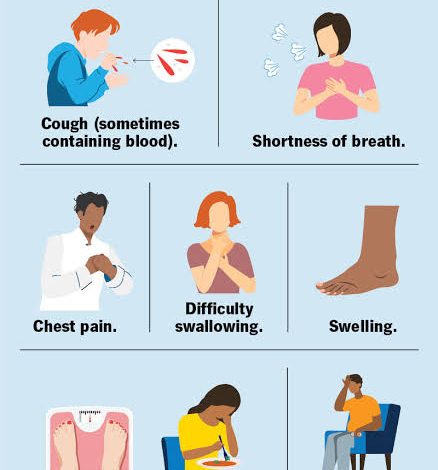Asbestos and Health Risks

Many people have heard the word asbestos, but few understand its dangers. This blog explores what asbestos is, its associated health risks and how to protect ourselves from exposure. This guide will provide you with all the necessary information to stay safe and informed.
What is Asbestos?
Asbestos is a naturally extracted group of minerals consisting of thin, thread-like fibres. There are six types of asbestos, but the three most common are chrysotile, amosite and crocidolite.
Asbestos was previously used widely in construction, manufacturing and various other industries due to its remarkable resistance to heat, fire and chemicals.
Health Risks of Asbestos Exposure
Asbestos fibres pose a significant health risk when they become airborne and are inhaled or ingested by individuals. Once inside the body, these fibres can cause serious health problems. The risks are exceptionally high for people with long-term exposure, but even short-term exposure can be harmful.
Long-term asbestos exposure can lead to several severe health conditions. These conditions include:
Asbestosis
Asbestosis is a chronic and degenerative lung disease caused by the inhalation of asbestos fibres. These microscopic fibres become lodged within the lung tissue, leading to extensive scarring that severely impairs the affected individual’s respiratory function.
Signs of asbestosis typically include shortness of breath, a persistent cough, chest tightness and fatigue.
Unfortunately, there is currently no known cure for asbestosis, but various medical interventions can help manage the symptoms and potentially improve the patient’s overall quality of life.
Mesothelioma
Mesothelioma is a rare and highly progressive type of cancer that mainly affects the protective lining surrounding the lungs. While the lungs are the most common site of mesothelioma, the disease can also potentially develop in the lining of the abdomen or the heart. It has a long latency period, often taking 20-50 years after exposure to develop.
Signs of potential symptoms include chest pain, shortness of breath and abdominal swelling.
Treatment options are limited and focus on extending life and relieving symptoms.
Lung Cancer
Asbestos exposure can vastly increase the chances of lung cancer, particularly among smokers.
Symptoms may include a persistent cough, coughing blood, chest pain and weight loss.
Early detection is critical for effective treatment.
Other Cancers
Research has shown that asbestos exposure is also linked to cancers of the gastrointestinal tract, ovary and larynx. These cancers may not be as common as lung cancer or mesothelioma, but they are still serious health concerns.
How Can You Be Exposed to Asbestos?
Asbestos exposure can happen in various ways, including:
Occupational Exposure: Construction, shipbuilding and manufacturing workers are at high risk. They may come into contact with asbestos-containing materials (ACMs) during installation, maintenance or demolition.
Environmental Exposure: People living near asbestos mines or factories may be exposed to airborne fibres. Asbestos can also be present in old buildings, posing a risk during renovations.
Secondary Exposure: Workers’ family members exposed to asbestos can also be at risk. Fibres brought home on clothing or equipment can be inhaled by others.
Do All Forms of Asbestos Have the Same Health Risk?
While all types of asbestos are harmful, some are more dangerous than others. Crocidolite (blue asbestos) is considered the most hazardous due to its thin, brittle fibres that are easily inhaled and cause significant damage. Chrysotile (white asbestos) is the most common type used in buildings and is considered less harmful compared to other types.
How Do I Protect Myself from Asbestos?
Protecting yourself from asbestos is crucial, as well as being informed and taking preventive measures. Here are some steps to minimise your risk:
- Learn about Asbestos: Consider taking an asbestos awareness course to understand where it might be found and how to be safe around it. The course teaches you how to identify ACMs, prevent exposure and what to do if asbestos is accidentally disturbed.
- Avoid Disturbing Asbestos: If you suspect a material contains asbestos, do not disturb it. Asbestos is dangerous when fibres become airborne. Hire professionals for inspection and removal.
- Use Protective Equipment: If you must work with or near asbestos, wear proper protective gear, such as masks and gloves, and ensure the area is well-ventilated.
- Regular Health Check-Ups: Regular health check-up screenings can help identify initial signs of asbestos-related diseases if you have been exposed to asbestos.
Training to Manage Asbestos
Understanding the duty to manage asbestos is crucial for those responsible for buildings and workplaces. This responsibility involves ensuring that ACMs are correctly identified, monitored and maintained to prevent exposure. Duty to manage asbestos course provides comprehensive training on legal requirements, risk assessment and safe handling practices. Participants learn how to identify materials that may contain asbestos in their building or workplace, assess the risk posed by ACMs and develop a management plan.
Conclusion
Asbestos is a hazardous substance that poses various health risks. Understanding what asbestos is, how it can affect your health and how you can be exposed to it is essential for protection. You can gain a comprehensive understanding and learn skills needed to safely handle and manage asbestos in your environment by undergoing training and awareness programmes. Stay informed, stay safe and take proactive steps to protect yourself and others from the dangers of asbestos.









